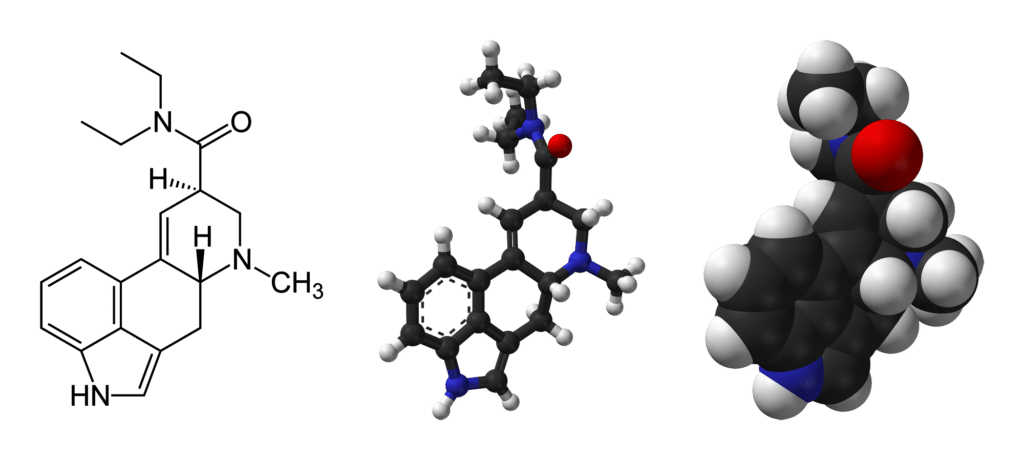Theoretical Framework
CONTENTS
Systems of Condensed Experience - COEX Systems
Systems of Condensed Experience (or COEX systems) is a concept somewhat akin to the well-known concept of complexes, found predominantly in the work of Freud and Jung. COEX systems, however, cover a larger phenomenological area, reflecting the extended understanding of the human psyche found in Grof’s work.
A COEX system consists of emotionally similarly flavored memories that form meaningful, thematically coherent structures. COEX systems govern a great deal of how we see the world, how we see ourselves, how we behave and react to the world, and how we experience our relationships. These memories may originate in various periods of our life, usually associated with instances of exceptionally strong emotional activation, e.g. physical or psychological trauma. However, they contain material from non-biographical levels of the psyche as well. Grof recognized that COEX systems practically always contain a significant perinatal component, and their roots can usually be traced to the transpersonal domain as well. As we progress in the holotropic process, we discover that the material that surfaces into our consciousness is always organized into a COEX system, with a particular theme and emotional character. We subjectively perceive this as an unfolding of a personal “story” or “journey” that we can follow and make sense of. It may take many months, or years of holotropic therapy to become fully aware of an entire COEX system. A COEX may comprise painful and traumatic memories, as well as ecstatic and blissful content. According to Grof, every human individual can have several of these systems operative in their psyche.
Let’s examine a few examples of some classic themes, or “common denominators” of COEX systems, as found in Grof’s book Psychology of the Future:
“The layers of a particular system can, for example, contain all the major memories of humiliating, degrading, and shaming experiences that have damaged our self-esteem. In another COEX system, the common denominator can be anxiety experienced in various shocking and terrifying situations or claustrophobic and suffocating feelings evoked by oppressive and confining circumstances. Rejection and emotional deprivation damaging the ability to trust men, women, or people in general, is another common motif. Situations that have generated profound feelings of guilt and a sense of failure, events that have resulted in a conviction that sex is dangerous or disgusting, and encounters with indiscriminate aggression and violence can be added to the above list as characteristic examples. Particularly important are COEX systems that contain memories of encounters with situations endangering life, health, and integrity of the body.”
Another very interesting and important feature of the COEX systems is their ability to influence our behavior in such a way that we unconsciously create external situations or contexts that match the internal state brought forward by whatever COEX happens to govern our psychological setup at that time. (Interestingly, at the time this is happening, we usually conceptualize the situation as if “inside out”, assuming that our internal emotional state is being produced by the external circumstances, as, for certain reasons, the reverse causality seems counterintuitive to us.) One of the ways to understand this process is by conceptualizing it as an autonomous protective mechanism of our psyche, the function of which is to avoid a mismatch between our internal and external realities.[10]
Thus, for example, if a COEX is active in an individual’s psyche, containing material characterized by a mixture of thrill and excitement, sexual arousal and an appetite for risk-taking, accompanied by elements of disgust and obscenity, this person may find himself acting out those impulses by roaming red-light districts at night, interacting with prostitutes, spending undue amounts of money and taking cocaine. Or, if the active COEX is characterized by states of paranoia, distrust, self-pity and envy, that person may find himself repeatedly trapped in situations where the people around him turn their backs on him; he may unknowingly arouse hostility in colleagues or family and attract intruders to his property.[11]
To round off our understanding of how a powerful destructive COEX system can negatively influence an individual’s life, and subsequently be resolved in the process of holotropic experiential therapy, the following is a concrete example, again taken from Grof’s book Psychology of the Future. In his book, Grof chose for this purpose the fairly harsh story of Peter, a 37-year-old tutor who had been intermittently hospitalized and treated in Grof’s Psychiatric Department in Prague, during the years of his intensive research into the possibilities of Psychedelics-Assisted Psychotherapy.[12]
At the time we began with the experiential sessions, Peter could hardly function in his everyday life. He was almost constantly obsessed with the idea of finding a man with certain physical characteristics and preferably clad in black. He wanted to befriend this man and tell him about his urgent desire to be locked in a dark cellar and exposed to various diabolic physical and mental tortures. Unable to concentrate on anything else, he wandered aimlessly through the city, visiting public parks, lavatories, bars, and railroad stations searching for the “right man”.
He succeeded on several occasions to persuade or bribe various men who met his criteria to promise or do what he asked for. Having a special gift for finding persons with sadistic traits, he was twice almost killed, several times seriously hurt, and once robbed of all his money. On those occasions, where he was able to experience what he craved for, he was extremely frightened and actually strongly disliked the tortures. In addition to this main problem, Peter suffered from suicidal depressions, impotence, and infrequent epileptiform seizures.
Reconstructing his history, I found out that his major problems started at the time of his involuntary employment in Germany during World War II. The Nazis used people brought to Germany from occupied territories for work in places threatened by air-raids, such as foundries and ammunition factories. They referred to this form of slave labor as Totaleinsetzung. At that time, two SS officers repeatedly forced him at gunpoint to engage in their homosexual practices. When the War was over, Peter realized that these experiences had created in him a strong preference for homosexual intercourse experienced in the passive role. This gradually changed into fetishism for black male clothes and finally into the complex obsessive-compulsive masochistic behavior described above.
Fifteen consecutive psychedelic sessions revealed a very interesting and important COEX system underlying his problems. In its most superficial layers were Peter’s more recent traumatic experiences with his sadistic partners. On several occasions, the accomplices whom he had recruited actually bound him with ropes, locked him into a cellar without food and water, and tortured him by flagellation and strangulation according to his wishes. One of these men hit him on his head, bound him with a rope, and left him lying in a forest after stealing his money.
Peter’s most dramatic adventure involved a man who claimed he had in his cabin in the woods just the kind of cellar Peter wanted and promised to take him there. When they were traveling by train to this man’s weekend house, Peter was struck by the strange-looking bulky backpack of his companion. When the latter left the compartment and went to the bathroom, Peter stepped up on the seat and checked the suspect baggage. He discovered a complete set of murder weapons, including a gun, a large butcher knife, a freshly sharpened hatchet, and a surgical saw used for amputations. Panic-stricken, he jumped out of the moving train and suffered serious injuries. Elements of the above episodes formed the superficial layers of Peter’s most important COEX system.
A deeper layer of the same system contained Peter’s memories from the Third Reich. In the sessions where this part of the COEX constellation manifested, he relived in detail his experiences with the homosexual SS officers, with all the complicated feelings involved. In addition, he relived several other traumatic memories from World War II and dealt with the entire oppressive atmosphere of this period. He had visions of pompous Nazi military parades and rallies, banners with swastikas, ominous giant eagle emblems, scenes from concentration camps, and many others.
Then came layers related to Peter’s childhood, particularly those involving punishment by his parents. His alcoholic father was often violent when he was drunk and used to beat him in a sadistic way with a large leather strap. His mother’s favorite method of punishing him was to lock him into a dark cellar without food for long periods of time. Peter recalled that throughout his childhood she always wore black dresses; he did not remember her ever wearing anything else. At this point, he realized that one of the roots of his obsession seemed to be craving for suffering that would combine the elements of punishment inflicted on him by his parents.
However, that was not the whole story. As we continued with the sessions, the process deepened and Peter confronted the trauma of his birth with all its biological brutality. This situation had all the elements that he expected from the sadistic treatment he was so desperately trying to receive: dark enclosed space, confinement and restriction of the body movements, and exposure to extreme physical and emotional tortures. Reliving of the trauma of birth finally resolved his difficult symptoms to such an extent that he could again function in life.
Right, it is time to leave the Psychiatric ward and move on to the next fascinating theoretical concept of Grof’s cartography, namely…



